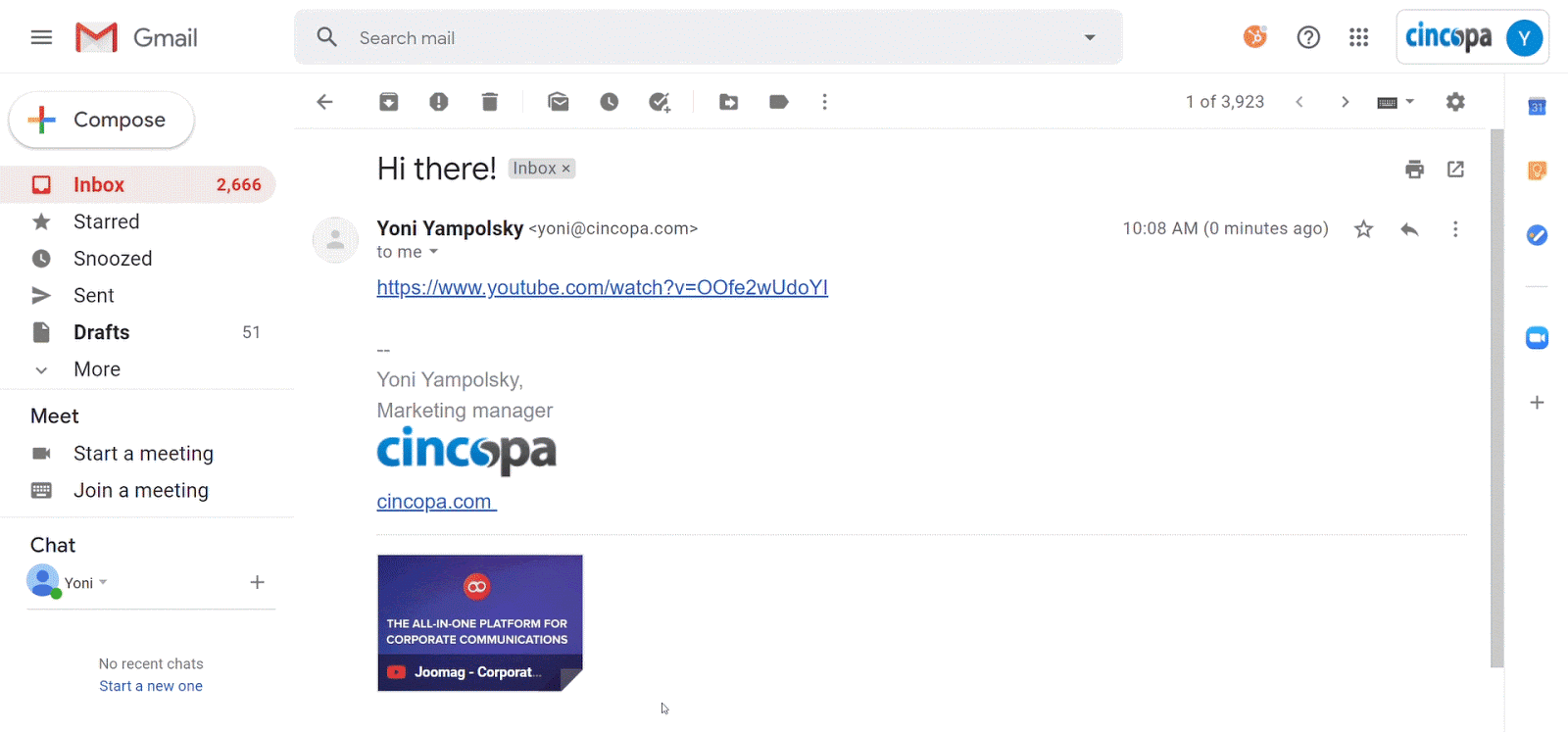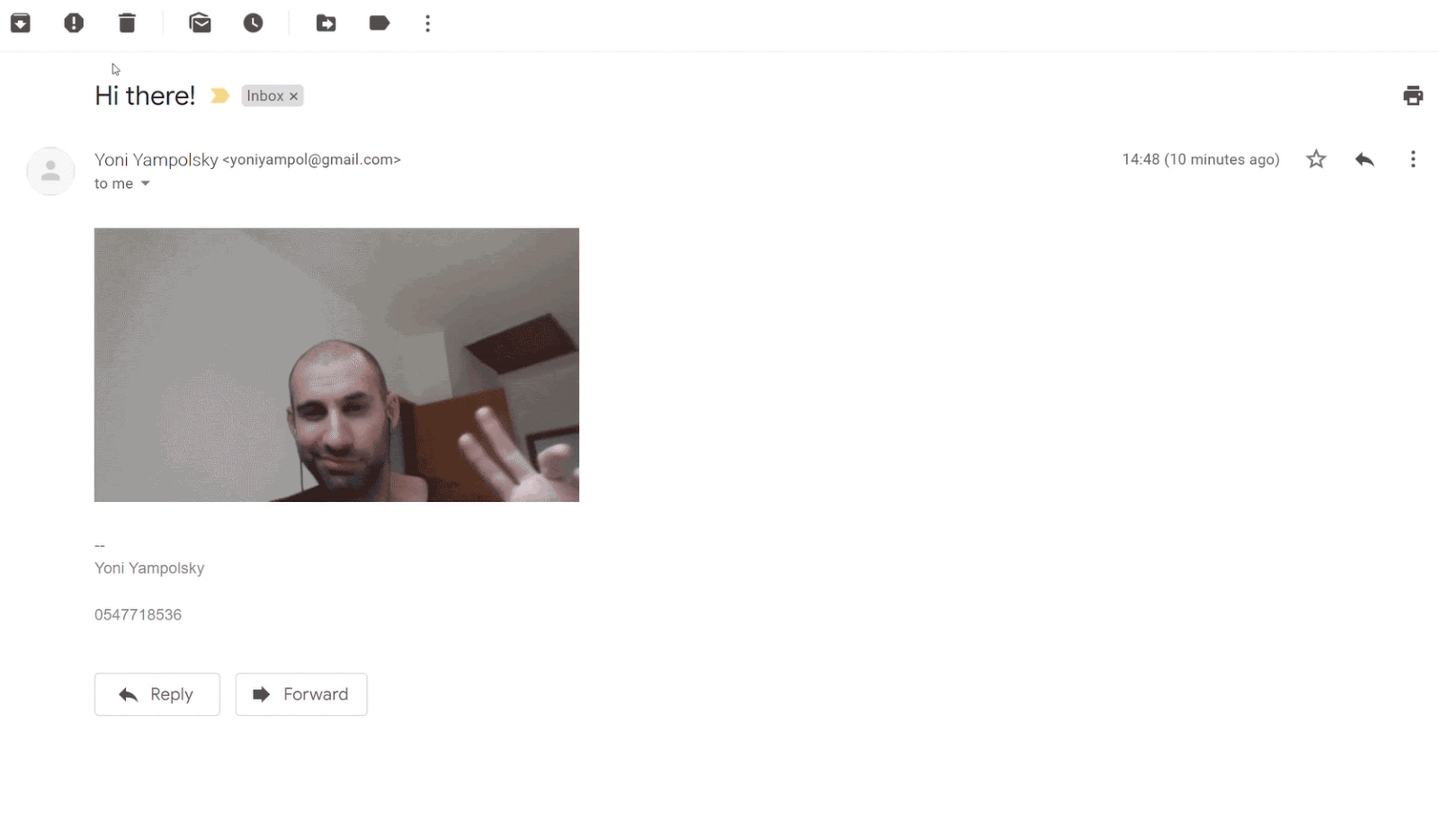
Grabbing a prospect’s attention, dispelling his or her presumptions and inhibitions regarding you and your offering, and, finally, guiding him or her throughout the decision-making stage, requires a lot of ingenuity and mental toughness.
Successful sales reps (supported by savvy, sales-oriented marketers) approach the sales process knowing they can rely on a number of tested techniques and tools.
Chief among these is video and video-based solutions.
They do this for for a simple reason:
More than any other form of content, videos simply click with prospects.
Don’t take my word for it:
According to HubSpot, 85% of consumers want to see more video content from brands. 64% of consumers will make a purchase after watching branded videos on social platforms.
Most importantly, video has a profound impact on sales and marketing emails.
Does a 300% increase in email click-through rates with emails containing videos compared to those without sound too-good to be true? Well, believe it, ‘cause it isn’t.
Merely teasing your email recipients with a subject containing the word “video” has been found to increase open rates by 19%, and reduce unsubscribes by 25%!‘
That sounds great, but how do I get involved?
’Don’t worry; we’ve got you covered.
Without further ado, here 3 ways in which you can leverage video towards getting more out of your email campaigns.
Step 1: Embed videos into your emails
This one’s a no brainer. If you want to reap the benefits of in-email videos you first need to actually add them to your email.
The act of adding a video to an email is referred to as embedding. If the video you wish to share is hosted on (i.e. uploaded to) YouTube or Vimeo, you can simply copy and paste the link within your email or marketing automation platform (e.g. HubSpot).

Here’s what an embedded video looks like when sent via Gmail. While free (at least in the case of YouTube links), this approach is severely limiting from a marketing and sales perspective.
Remember the aforementioned high CTR (click-through-rate) in-email videos lead to? When you use a YouTube link, there’s no way for you to know whether your contact clicked on it or not.
Quick to realize their true conversion potential, leading marketing and sales departments began approaching video embeds strategically. Opting to rely on video hosting platforms, marketers and sales reps can embed videos within any email in a way that many of us are familiar with:
This approach is not merely an aesthetic improvement.
In-email videos that are hosted on designated hosting platforms provide marketers and sales reps with critical information regarding email recipients’ interaction with them. You will know where, and on which device each video was watched, along with detailed breakdowns of how each recipient consumed each video; did he or she watch until the end? Did he or she come back for a second or third viewing?
The second embedding approach is leaned on by companies that rely on marketing automation platforms when conducting mass email campaigns. Good video hosting platforms integrate with most MAPs (marketing automation platforms). All you’ll need to do is copy and paste an embed code within your email. Once the email campaign is launched, you can view aggregated metrics regarding the way your contacts interact with the in-email video (the actual embed) and with the actual video, once they land on the designated page they’re directed to.
Step 2: Personalize your video
It’s critical for sales reps, specifically those who operate according to an account-based model, to convince their prospects that they are dealing with real, live human beings.
Unlike, say, an automated email signed by an actual company decision-maker, video resonates strongly with prospects, even when they assume it too is delivered to them as part of a company’s automated marketing initiative.
In many cases, adding a stimulating GIF-like thumbnail to an email will prompt a contact to interact with it, even if he or she knows they are not the sole recipient of this email.
There’s no need to overthink the actual GIF.
Think of recording yourself via webcam waving and smiling.
Ideally, you want the GIF to act as a teaser to a video that contacts will be directed to once they click on it.
The process of adding the GIF to your email (or email campaign) will vary depending on the email platform you use.
With most platforms, you’ll need to drag and drop the GIF file into an image block. Then, add the url of the video’s webpage to the designated spot.
Using a good video hosting platform can be beneficial here.
You can create a GIF consisting of the first few seconds of the video in question. By ticking a few setting boxes, you can have the video appear as a GIF once it’s embedded within the email.
Essentially, you’ll be cutting out the GIF creation and linking process.
 Here’s what a GIF video thumbnail looks like.
Here’s what a GIF video thumbnail looks like.Once someone clicks on it, he or she will be directed to the video.
Step 3: Follow up
Here’s where working with a good video hosting platform proves its weight in gold.You can base future interaction with a contact based on how he or she engaged with your video.
By integrating said video platforms with marketing automation platforms, you can arrange for specific content (whether be it blogs, personal emails or additional videos) to be sent to each recipient according to predefined levels of engagement.
For example, if a prospect clicks on the embedded video (preferably presented via an animated GIF 😊) and then watches said video beyond the halfway mark, you can arrange for you or your colleague to be notified. That way, you can follow up ASAP, knowing the recipient in question is a hot lead.
Conversely, if the email recipient abandons the video before the halfway point, you can arrange for another email containing a different video to be sent to him or her, automatically.
Final thoughts and takeaways
A majority of sales reps agree on the following:
Getting in front of prospects today is harder than it was five years ago.
Videos’ ability to elicit engagement, along with them lending themselves to a more human, personalized approach, positions them as sales and marketing’s go-to weapon of choice. In-email videos are a great, intuitive way to increase your reach-out emails’ CTR. And, with the right tools, they can be deployed at scale.

FAQ
Q: What makes videos effective in email marketing?
A: Videos captivate prospects like no other content. Research shows that consumers prefer video content from brands and are more likely to make a purchase after watching branded videos. Emails with videos can see a 300% increase in click-through rates and higher open rates, making them a powerful tool for engagement.
Q: How can I include videos in my emails?
A: Embedding videos directly into emails is straightforward. You can add a link to your video if it's hosted on platforms like YouTube or Vimeo. For better analytics and a more professional look, use a video hosting platform to embed videos that direct recipients to a dedicated landing page. This method provides detailed insights into recipient interaction, such as view duration and repeat views.
Q: Does personalizing videos improve email engagement?
A: Absolutely. Personalized videos humanize your outreach, increasing the chances of recipient interaction. Adding a customized GIF-like thumbnail, for instance, can grab attention and convey authenticity. This approach signals to recipients that they're engaging with real people, boosting the likelihood of them engaging with your content and ultimately, your offerings.


